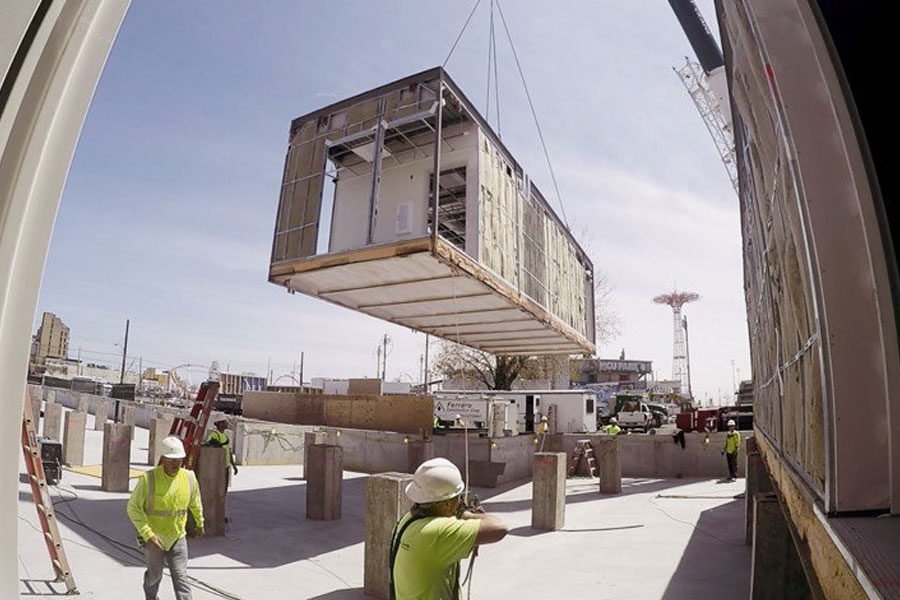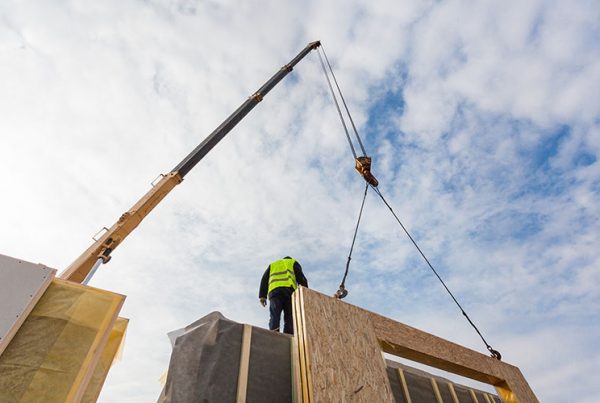Modular Construction: A Global Construction Solution
Lets get straight to the point: the UK construction industry has a problem, three problems to be precise. First, an aging demographic (mostly with their own homes) combined with a impoverished younger population (mostly without); secondly, a lack of new companies entering the sector (think Carillion) and, third, a marked decline in skilled labour that isn’t likely to improve anytime soon with Brexit on the horizon. All of which makes the UK Government’s target of building 300,000 new homes every year until 2020 look distinctly shaky if only because, according to Arcadis Target, this would require 400,000 new skilled workers to be added every year from 2017(one every 77 seconds). Not particularly likely given lack of skilled workers is a core component of the problem.
But the proof of the pudding is in the eating. In 2017 the Government fell 80,000 short of its target (nearly 30% short), which is why Modular Construction has now leapt up the list of UK Policy priorities: if you can’t change the system, change the method and no existing building technology is better equipped to deliver quality housing at pace than Modular Construction. In fact, off site prefabrication delivers units at three times the rate of conventional technologies so its just what the Government needs to meet its target…
Except no matter how hard Government seems to try, modular construction in the United Kingdom is still at cottage industry levels, largely because of the first of those three factors we just mentioned: an aging demographic and an impoverished younger population acting together effectively to staunch demand for innovation.
How different then things are on the subcontinent.
Rather than an aging demographic, India has an increasingly youthful population, increasingly urbanised and increasingly wealthy as well as being drawn inexorably to live and work in the subcontinent’s major conurbations (Mumbai and Bangaluru in particular). And it is this demographic trend that is creating a surge in demand for affordable urban housing added to which, unlike the UK, India has no shortage of new construction entrants or skilled labour.
Again, the proof of the pudding is in the eating… Knight Frank’s latest India Real Estate Report found a surge in the number of new project launches for the first half of this year, up by 46% and with a marked increase in affordable housing starts too (making up 51% of supply). Most Indian Cities are also showing exceptionally strong rental growth, with Bengaluru in the lead at 17% year on year. All in all it’s a very different picture from the UK but what the two countries do have in common is housing targets: specifically those established in India by the Affordable Housing Programme which are if anything tougher than those confronting the UK Government.
That’s where Modular Construction comes in, because in contrast to the position in the former mother country, off site prefabrication on the subcontinent is very far from being a cottage industry. Favourable economic conditions and underlying demographic trends have instead made it an essential component of India’s drive to meet its public housing targets by 2022. The sheer pace and quality of delivery offered by modular technologies (not only for homes but hospitals, schools and office buildings too) simply can’t be matched by conventional building techniques: something the UK Government seems to be waking up to, if perhaps a little too late.
Red Ribbon set up Modulex Modular Buildings with the intention of building on these demographic and economic trends, recognising the outstanding capacity of Modulex to deliver above market rate returns for investors by tapping into high demand levels in India’s real estate markets. Modulex provides an exciting opportunity for investors to participate in this key sector of the fastest growing large economy in the world.
[nectar_btn size="large" open_new_tab="true" button_style="regular" button_color_2="Accent-Color" icon_family="none" url="http://bit.ly/Modulex" text="Modulex Modular Buildings Plc"]
Red Ribbon CEO, Suchit Punnose said:
I found it interesting to compare the current strengths and weaknesses of the Indian and UK construction sectors where the same three factors for change seem to be working in wholly opposite directions (to India’s advantage). But more than that, I was also struck that both sectors have now come to the conclusion that view modular construction has to be a key component in delivering the significant number of new units required in each country. I know, for example, that the House of Lords Technology Committee has recently started an investigation into the advantages off site prefabrication offer in helping meet policy targets which seem at the moment to be running away from the Government. Perhaps though, as the article points out, that may all be too little too late.
For our part, and with Red Ribbon’s roots set deep in the Indian markets for over a decade now, it is a trend we have obviously been following with great interest for some years. That’s why we decided to take a pivotal role in establishing Modulex Modular Construction on the subcontinent and its why we remain excited at its prospects of delivering above market rates for our investors in such a resurgent real estate market. We firmly believe Modular Construction will play an essential part in India’s future.
[social_buttons full_width_icons="true" facebook="true" twitter="true" google_plus="true" linkedin="true" pinterest="true"]







Leave a Reply